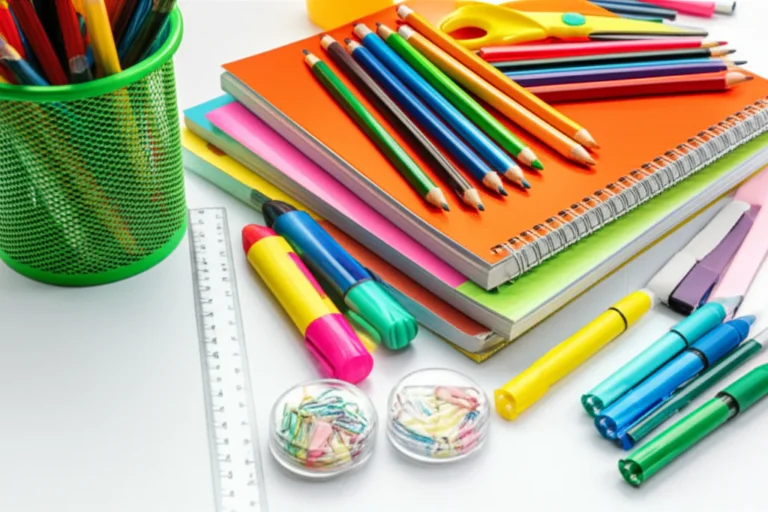Support our educational content for free when you purchase through links on our site. Learn more
Is Supply Teaching Stressful? 7 Truths Every Educator Must Know (2025) 🎒
Ever walked into a classroom full of unfamiliar faces, lesson plans you barely know, and the clock ticking down to chaos? Welcome to the world of supply teaching—a role that’s as thrilling as it is nerve-wracking. But is supply teaching truly stressful, or is it just misunderstood? Spoiler alert: it’s a bit of both. In this article, we unpack the real challenges supply teachers face daily, from unpredictable schedules to managing classroom dynamics on the fly. More importantly, we reveal 7 proven strategies to not just survive but thrive in this dynamic career.
Did you know that nearly 40% of supply teachers report feeling isolated or unsupported in their roles? Yet many also cite the freedom and variety as their biggest motivators. Curious how to balance these extremes? Keep reading to discover expert tips, personal stories, and must-have tools that can transform your supply teaching experience from stressful to satisfying.
Key Takeaways
- Supply teaching involves unique stressors like unpredictability, unfamiliar environments, and financial fluctuations.
- Preparation and adaptability are your best allies—having a versatile lesson plan and classroom management toolkit is essential.
- Building connections with staff and students reduces isolation and improves your teaching experience.
- Mindfulness and self-care techniques help manage anxiety and prevent burnout.
- Leveraging technology such as Google Classroom and ClassDojo can streamline your workflow and engagement.
- Supply teaching offers rewarding flexibility and diverse experiences despite its challenges.
- Explore our curated Classroom Supplies, Learning Materials, and Instructional Technology to gear up for success!
Ready to turn stress into strength? Let’s dive in!
Table of Contents
- ⚡️ Quick Tips and Facts: Navigating the Supply Teaching Landscape
- 📚 The Evolving Role of Supply Teaching: A Historical Perspective on Stressors
- 🤔 Is Supply Teaching Stressful? Unpacking the Realities of Daily Challenges
- 🎢 The Rollercoaster of Uncertainty: Daily Anxiety Triggers for Supply Teachers
- 🗣️ The Isolation Factor: Feeling Adrift in a Sea of New Faces and Unfamiliar Staff
- 🍎 Classroom Chaos Control: Mastering Management in Unfamiliar Environments
- 🤯 Curriculum Conundrums: Stepping into the Unknown Lesson Plan and Subject Matter
- 💰 Financial Fluctuations: The Stress of Irregular Income and Job Security
- 💡 Beyond the Burnout: 7 Strategies for Thriving as a Supply Teacher
- 1. 🎒 Preparation is Power: Your Ultimate Supply Teacher Survival Kit
- 2. 🧘♀️ Mastering Mindfulness: Stress Reduction Techniques for the Classroom and Beyond
- 3. 🤝 Building Bridges: Connecting with Staff, Students, and the School Community
- 4. ✅ Setting Boundaries: Protecting Your Well-being and Achieving Work-Life Balance
- 5. 📈 Continuous Learning: Upskilling for Confidence and Competence in Diverse Settings
- 6. 🌐 Leveraging Technology: Digital Tools for Seamless Supply Teaching
- 7. 💖 Cultivating Resilience: Bouncing Back from Challenging Days
- 🌟 The Unexpected Joys: Why Supply Teaching Can Be Surprisingly Rewarding
- 🏆 Expert Insights: Our Top Recommendations for a Stress-Free Supply Teaching Career
- Conclusion
- Recommended Links
- FAQ
- Reference Links
Quick Tips and Facts: Navigating the Supply Teaching Landscape
As educators at Teacher Supply Store™, specializing in supplies and learning materials for your class, we understand the challenges of supply teaching. If you’re wondering what you do as a supply teacher, it’s essential to know that supply teachers, or substitute teachers, play a vital role in ensuring continuity of education when regular teachers are absent. Here are some quick tips and facts to help you navigate the supply teaching landscape:
- Be prepared: Always have a lesson plan ready, including engaging activities and exercises to keep students focused.
- Communicate effectively: Establish clear communication with the school staff, students, and parents to ensure a smooth transition.
- Be flexible: Be prepared to adapt to new environments, students, and teaching styles.
- Stay organized: Keep track of your schedule, lesson plans, and student progress to ensure a successful teaching experience.
The Evolving Role of Supply Teaching: A Historical Perspective on Stressors
The role of supply teaching has evolved significantly over the years, with changing educational policies, curriculum requirements, and societal expectations. According to a report by the National Education Association, the demand for supply teachers has increased due to factors such as teacher shortages, budget constraints, and the need for more flexible staffing models. This shift has led to increased stress and pressure on supply teachers to perform, often with limited resources and support.
Is Supply Teaching Stressful? Unpacking the Realities of Daily Challenges
Supply teaching can be a highly stressful profession, with daily challenges that can take a toll on a teacher’s mental and physical well-being. Some of the common stressors include:
- Uncertainty and unpredictability: Supply teachers often face last-minute bookings, unfamiliar environments, and varying student behaviors, making it difficult to plan and prepare.
- Lack of support and resources: Supply teachers may not have access to the same level of support, resources, and training as regular teachers, making it challenging to manage classrooms and meet student needs.
- High expectations: Supply teachers are often expected to perform at the same level as regular teachers, with limited time to prepare and adjust to new environments.
The Rollercoaster of Uncertainty: Daily Anxiety Triggers for Supply Teachers
The uncertainty and unpredictability of supply teaching can be a significant source of anxiety for many teachers. Some common triggers include:
- Last-minute bookings: Receiving a call or email with a last-minute booking can be stressful, especially if the teacher is not familiar with the school, students, or subject matter.
- Unfamiliar environments: Walking into a new school or classroom can be intimidating, especially if the teacher is not familiar with the layout, resources, or staff.
- Varying student behaviors: Managing a new group of students with different behaviors, needs, and expectations can be challenging, especially if the teacher is not familiar with the school’s policies and procedures.
The Isolation Factor: Feeling Adrift in a Sea of New Faces and Unfamiliar Staff
Supply teachers often experience feelings of isolation and disconnection from the school community, which can exacerbate stress and anxiety. Some common challenges include:
- Lack of support from staff: Supply teachers may not receive the same level of support or guidance from staff, making it difficult to navigate the school’s policies and procedures.
- Limited opportunities for collaboration: Supply teachers may not have the opportunity to collaborate with other teachers or staff, making it challenging to build relationships and establish a sense of belonging.
- Feeling like an outsider: Supply teachers may feel like outsiders, especially if they are not familiar with the school’s culture, policies, or procedures.
Classroom Chaos Control: Mastering Management in Unfamiliar Environments
Managing a classroom in an unfamiliar environment can be a significant challenge for supply teachers. Some strategies for mastering classroom management include:
- Establishing clear expectations: Clearly communicating expectations and rules to students can help establish a positive and respectful classroom environment.
- Using positive reinforcement: Using positive reinforcement techniques, such as praise and rewards, can help encourage good behavior and motivate students.
- Staying organized: Keeping track of lesson plans, materials, and student progress can help supply teachers stay focused and in control.
Curriculum Conundrums: Stepping into the Unknown Lesson Plan and Subject Matter
Supply teachers often face the challenge of stepping into an unfamiliar lesson plan or subject matter, which can be a significant source of stress and anxiety. Some strategies for navigating curriculum conundrums include:
- Reviewing lesson plans: Taking the time to review lesson plans and materials can help supply teachers understand the curriculum and prepare for the lesson.
- Asking questions: Asking questions and seeking guidance from staff or colleagues can help supply teachers clarify any doubts or concerns.
- Being flexible: Being flexible and adaptable can help supply teachers adjust to new curriculum requirements or unexpected changes.
Financial Fluctuations: The Stress of Irregular Income and Job Security
Supply teachers often face financial fluctuations due to irregular income and job security, which can be a significant source of stress and anxiety. Some strategies for managing financial fluctuations include:
- Budgeting and planning: Creating a budget and planning for irregular income can help supply teachers manage their finances and reduce stress.
- Diversifying income streams: Exploring alternative income streams, such as tutoring or online teaching, can help supply teachers reduce their reliance on a single income source.
- Seeking support: Seeking support from financial advisors or colleagues can help supply teachers navigate financial challenges and make informed decisions.
Beyond the Burnout: 7 Strategies for Thriving as a Supply Teacher
While supply teaching can be a challenging and stressful profession, there are strategies that can help teachers thrive and avoid burnout. Here are 7 strategies for success:
1. Preparation is Power: Your Ultimate Supply Teacher Survival Kit
Preparation is key to success as a supply teacher. Some essential items to include in your survival kit are:
- Lesson plans: Having a range of lesson plans and activities can help you prepare for different subjects and age groups.
- Teaching materials: Keeping a stash of teaching materials, such as worksheets, games, and activities, can help you engage students and manage classrooms.
- Technology: Having access to technology, such as laptops or tablets, can help you stay organized and connected with staff and students.
2. Mastering Mindfulness: Stress Reduction Techniques for the Classroom and Beyond
Mindfulness and stress reduction techniques can help supply teachers manage stress and anxiety. Some strategies include:
- Deep breathing: Practicing deep breathing exercises can help calm the mind and reduce stress.
- Meditation: Regular meditation practice can help reduce anxiety and improve focus.
- Physical activity: Engaging in regular physical activity, such as walking or yoga, can help reduce stress and improve overall well-being.
3. Building Bridges: Connecting with Staff, Students, and the School Community
Building relationships with staff, students, and the school community is essential for supply teachers. Some strategies include:
- Introducing yourself: Taking the time to introduce yourself to staff and students can help establish a positive and respectful relationship.
- Asking questions: Asking questions and seeking guidance from staff can help you understand the school’s policies and procedures.
- Volunteering: Volunteering for school events or activities can help you connect with the school community and build relationships.
4. Setting Boundaries: Protecting Your Well-being and Achieving Work-Life Balance
Setting boundaries is essential for supply teachers to protect their well-being and achieve a work-life balance. Some strategies include:
- Prioritizing self-care: Making time for self-care activities, such as exercise or meditation, can help reduce stress and improve overall well-being.
- Establishing a routine: Establishing a routine can help you stay organized and focused, both in and out of the classroom.
- Learning to say no: Learning to say no to requests that are not aligned with your values or priorities can help you maintain a healthy work-life balance.
5. Continuous Learning: Upskilling for Confidence and Competence in Diverse Settings
Continuous learning and upskilling are essential for supply teachers to stay confident and competent in diverse settings. Some strategies include:
- Professional development: Engaging in professional development opportunities, such as workshops or conferences, can help you stay up-to-date with the latest teaching methods and technologies.
- Online courses: Taking online courses or certifications can help you develop new skills and knowledge.
- Mentorship: Seeking mentorship from experienced teachers or educators can help you gain guidance and support.
6. Leveraging Technology: Digital Tools for Seamless Supply Teaching
Technology can be a powerful tool for supply teachers, helping to streamline communication, organization, and instruction. Some digital tools to consider include:
- Learning management systems: Utilizing learning management systems, such as Google Classroom or Canvas, can help you stay organized and connected with students.
- Communication apps: Using communication apps, such as Remind or ClassDojo, can help you stay in touch with parents and students.
- Digital lesson plans: Creating digital lesson plans can help you stay organized and focused, and can be easily shared with staff and students.
7. Cultivating Resilience: Bouncing Back from Challenging Days
Cultivating resilience is essential for supply teachers to bounce back from challenging days and maintain a positive outlook. Some strategies include:
- Practicing self-compassion: Treating yourself with kindness and compassion can help you stay positive and focused.
- Reframing challenges: Reframing challenges as opportunities for growth and learning can help you stay motivated and engaged.
- Seeking support: Seeking support from colleagues, mentors, or friends can help you stay connected and motivated.
The Unexpected Joys: Why Supply Teaching Can Be Surprisingly Rewarding
While supply teaching can be challenging, it can also be surprisingly rewarding. Some of the unexpected joys include:
- Freedom and flexibility: Supply teaching can offer a sense of freedom and flexibility, allowing you to choose your own schedule and work at your own pace.
- Diverse experiences: Supply teaching can provide diverse experiences, allowing you to work with different students, teachers, and schools.
- Making a difference: Supply teaching can be a rewarding way to make a difference in the lives of students, even if it’s just for a day.
Freedom and Flexibility: Crafting Your Own Schedule and Professional Path
Supply teaching can offer a sense of freedom and flexibility, allowing you to craft your own schedule and professional path. Some benefits include:
- Choosing your own assignments: Supply teachers can often choose their own assignments, allowing them to select schools and subjects that align with their interests and strengths.
- Creating your own schedule: Supply teachers can often create their own schedule, allowing them to balance work and personal life.
- Pursuing professional development: Supply teachers can pursue professional development opportunities, such as workshops or certifications, to enhance their skills and knowledge.
Diverse Experiences: A New Adventure and Learning Opportunity Every Day
Supply teaching can provide diverse experiences, allowing you to work with different students, teachers, and schools. Some benefits include:
- Meeting new people: Supply teaching can provide opportunities to meet new people, including students, teachers, and staff.
- Learning new things: Supply teaching can provide opportunities to learn new things, including new subjects, teaching methods, and technologies.
- Developing new skills: Supply teaching can provide opportunities to develop new skills, including classroom management, lesson planning, and communication.
Making a Difference: Impacting Lives, One Day at a Time, Across Many Schools
Supply teaching can be a rewarding way to make a difference in the lives of students, even if it’s just for a day. Some ways to make a difference include:
- Providing support: Supply teachers can provide support to students, including academic support, emotional support, and guidance.
- Building relationships: Supply teachers can build relationships with students, including relationships based on trust, respect, and mutual understanding.
- Inspiring learning: Supply teachers can inspire learning, including a love of learning, a sense of curiosity, and a desire to explore and discover.
Expert Insights: Our Top Recommendations for a Stress-Free Supply Teaching Career
As experts in education, we recommend the following strategies for a stress-free supply teaching career:
- Stay organized: Keep track of your schedule, lesson plans, and student progress to ensure a successful teaching experience.
- Communicate effectively: Establish clear communication with the school staff, students, and parents to ensure a smooth transition.
- Be flexible: Be prepared to adapt to new environments, students, and teaching styles.
- Prioritize self-care: Make time for self-care activities, such as exercise or meditation, to reduce stress and improve overall well-being.
For more information on supply teaching, check out our article on what you do as a supply teacher. You can also explore our range of classroom supplies and learning materials to help you succeed in your supply teaching career. Additionally, consider utilizing instructional technology to enhance your teaching practice and engage your students.
The video “Why does supply teaching get a bad press?” by RandstadUKHolding – Gail Larkin from the NAHT, which can be found at this link, provides valuable insights into the challenges faced by supply teachers and offers suggestions for improving their experience.
Conclusion
So, is supply teaching stressful? The short answer: yes and no. It’s a unique profession packed with unpredictability, unfamiliar classrooms, and the challenge of stepping into someone else’s shoes daily. But it’s also a career that offers freedom, flexibility, and the chance to make a meaningful impact across diverse student groups. Our educators at Teacher Supply Store™ have seen firsthand how preparation, resilience, and smart use of resources can transform stress into success.
Remember the anxiety of last-minute bookings and walking into unknown classrooms? That uncertainty can be tamed with a well-stocked survival kit, solid classroom management strategies, and a mindset tuned for adaptability. And while financial fluctuations and feelings of isolation are real stressors, proactive planning and building connections can ease those burdens.
If you’re wondering whether supply teaching is “better” or “worse” than full-time teaching, it’s a trade-off. You lose some stability but gain autonomy and relief from relentless pressures like excessive marking or rigid schedules. As one supply teacher put it, “I’m free of the relentless pressures that made me leave teaching in the first place.” That freedom is priceless.
So, if you’re considering supply teaching or already in the trenches, embrace the challenges as opportunities. Equip yourself with the right tools, nurture your well-being, and remember: every day is a fresh adventure. And if you want to dive deeper into managing stress and avoiding burnout, our recommended resources below will guide you further.
Recommended Links
👉 CHECK PRICE on:
- Classroom Supplies: Amazon | Walmart | Teacher Supply Store™ Classroom Supplies
- Learning Materials: Amazon | Etsy | Teacher Supply Store™ Learning Materials
- Instructional Technology: Amazon | Teacher Supply Store™ Instructional Technology
- Google Classroom (Official): Google Classroom
- ClassDojo (Official): ClassDojo
Books on Amazon:
- The Supply Teacher Survival Guide by Sarah Johnson — A practical guide packed with tips and strategies for thriving in supply teaching.
- Mindfulness for Teachers by Patricia A. Jennings — Learn mindfulness techniques tailored for educators to reduce stress and improve classroom dynamics.
- The First Days of School by Harry K. Wong — A classic on classroom management, invaluable for supply teachers stepping into new environments.
FAQ
What are common challenges faced by supply teachers?
Supply teachers often grapple with unpredictability, such as last-minute assignments and unfamiliar classrooms. They may lack access to resources and support systems that full-time teachers enjoy, leading to feelings of isolation. Managing diverse student behaviors without prior knowledge of individual needs and school policies adds another layer of complexity. Financial instability due to irregular work also contributes to stress.
Read more about “What Does the Average Teacher Spend on Classroom Supplies in 2025? 💸”
How can supply teachers manage stress in the classroom?
Effective stress management starts with preparation: having adaptable lesson plans and a well-stocked supply kit reduces anxiety. Establishing clear classroom rules and using positive reinforcement helps maintain control. Mindfulness techniques like deep breathing and short meditation breaks can calm nerves. Building relationships with staff and students fosters a supportive environment, reducing feelings of isolation.
What role does self-care play in stress management?
Self-care is crucial. Setting boundaries to avoid overcommitment, ensuring adequate rest, and engaging in activities outside teaching help replenish energy. Remember, a well-rested teacher is a more effective teacher.
Read more about “The Ultimate 60+ Item Elementary Teacher Supply List (2025) 🎒”
What essential supplies help supply teachers stay organized?
A supply teacher’s toolkit should include:
- Portable lesson plans and activity sheets
- Basic stationery: pens, markers, sticky notes
- Classroom management aids: timers, reward stickers
- Technology devices: tablet or laptop with access to digital resources
- Personal comfort items: water bottle, snacks, and a thermos (because yes, a hot drink can be a lifesaver!)
These essentials help you hit the ground running and adapt quickly to any classroom.
Read more about “10 Must-Have Organizational Tools for Teachers to Tidy Up Classrooms 🧰 (2025)”
How do learning materials impact the effectiveness of supply teaching?
High-quality learning materials tailored to different age groups and subjects empower supply teachers to deliver engaging lessons without scrambling for resources. They reduce preparation time and help maintain continuity in students’ learning. Using interactive and multimedia materials can also boost student engagement, making your job easier and more rewarding.
Read more about “What Do You Do as a Supply Teacher? 10 Must-Know Facts! 🎒 (2025)”
Reference Links
- TES Magazine: Supply Teaching is Harder Than I Expected
- National Education Association: Substitute Teachers
- Google Classroom Official Site
- ClassDojo Official Site
- Generate FS: How to Avoid Burnout as a Supply Teacher
- Teacher Supply Store™ Classroom Supplies
- Teacher Supply Store™ Learning Materials
- Teacher Supply Store™ Instructional Technology
We hope this comprehensive guide has illuminated the realities of supply teaching stress and empowered you with strategies and resources to thrive. Remember, every challenge is an opportunity in disguise—now go out there and make your mark! 🚀






